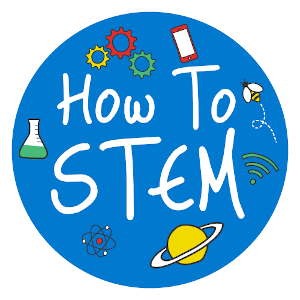
STEM education is a global endeavour to improve the Science, Technology, Engineering and Mathematical skills of children and young people. Every country around the world has a different approach to implementing it: whilst some are embedding it within their educational policies, others are delivering it through external organisations
This got us thinking. How does STEM education differ between countries? Who is doing it ‘best’? We’ve done our research and these are the findings:

In 2015, all Australian education ministers agreed to the National STEM School Education Strategy 2016-2026 which focuses on developing mathematical, scientific and digital literacy; and promoting problem-solving, critical analysis and creative thinking skills. The strategy aims to deliver improvements to STEM education and has two main goals:
- Ensure all students finish school with strong foundational knowledge in STEM and related skills
- Ensure that students are inspired to take on more challenging STEM subjects
In 2017, the STEM Partnerships Forum was established as one of the key national collaborative actions under the National STEM School Education Strategy 2016-2026. The Forum brought together leaders from industry and education to facilitate a more strategic approach to school-based partnerships with businesses and industry across Australia in order to develop the engagement, aspiration, capability and attainment of students in STEM.
The Australian Government Department of Education commissioned the National STEM School Education Resources Toolkit in response to a STEM Partnerships Forum recommendation. The aim of the National STEM School Education Resources Toolkit is to assist schools and industry to establish new STEM initiatives, form school-industry partnerships, and evaluate existing and future STEM initiatives.

There are various organisations set up in the UK to support STEM education in schools. These include STEM Learning which delivers STEM CPD and a STEM ambassadors programme, and the British Science Association, a charity developing reports and resources for supporting STEM learning.
Scotland has a long tradition of expertise, innovation and achievement in STEM, viewing it as an integral part of their future economic and social development. In 2017, the Scottish Government published the STEM Education and Training Strategy for Scotland. This set out a vision of Scotland as a STEM nation: with a highly-educated and skilled population equipped with the STEM skills, knowledge and capability required to adapt and thrive in the fast-paced, changing world and economy around us. The 2020 second annual report discusses how Scotland has build upon the progress made.
The Science, Technology, Engineering and Mathematics (STEM) in education and training publication sets out the Welsh Government’s strategic objectives for the provision of STEM for 3 to 19-year-olds in Wales. This includes guidance for making curriculum links to STEM education.
Meanwhile, Ireland has developed a STEM Education Policy Statement 2017-2026 which focusses on the many strengths in STEM education while providing a roadmap to address the areas for development.

The STEM Education Strategic Plan, Charting a Course for Success: America’s Strategy for STEM Education, published in December 2018, sets out a federal strategy for the next five years based on a vision for a future where all Americans will have lifelong access to high-quality STEM education and the United States will be the global leader in STEM literacy, innovation, and employment.
In December 2020, the Office of Science and Technology Policy at the White House issued the Progress Report on the Implementation of the Federal STEM Education Strategic Plan. This progress report describes ongoing efforts and implementation practices across the Federal Government as it works to accomplish the goals and objectives of the Strategic Plan.

The New Zealand government has recently been encouraging schools to promote STEM education in the hope that this will ease the STEM skills shortage. The Ministry of Education supports teacher training programs such as Teach First and Manaiakalani Digital Teachers Academy programme which help to place high performing STEM graduates and digitally confident teachers in education.
A national strategic plan, A Nation of Curious Minds, is a government initiative with a ten-year goal to promote the importance of science and technology in New Zealand. Since 2015 it has funded more than 175 projects in excess of $NZD 6 million.

India is the second most populous country in the world. In 2015 Prime Minister Narendra Damodardas Modi launched the ‘Skill India‘ campaign, aimed at training over 400 million young people in different skills by 2022. One such skill is STEM education. One challenge the country faces in doing so is designing the infrastructure and curriculum to support this objective. Since the campaign began there has been a focus on developing innovation and manufacturing skills from a young age. The India STEM Foundation organisation works in partnership with India’s Department for Science and Technology to promote STEM education across the country. Other organisations playing a pivotal role in developing STEM education in India include STEM Champ and EduTech.
After reviewing the government policy initiatives and third sector contributions in these countries, we think Australia may be slightly ahead of the game. But what do you think? Add your comments on this below.





STEM education should be global, but obviously less-developed countries will never have the same resources as we do in the UK
The fact that you use the term “never” is quite disconcerting. Why on earth would anyone put such a negative and limiting connotation on such a hopeful and progressive concept? Let’s hope that one day the less-developed countries WILL in fact have the same educational resources as the UK.